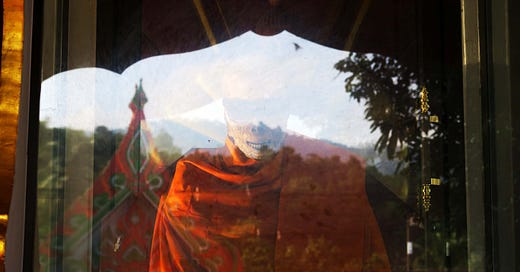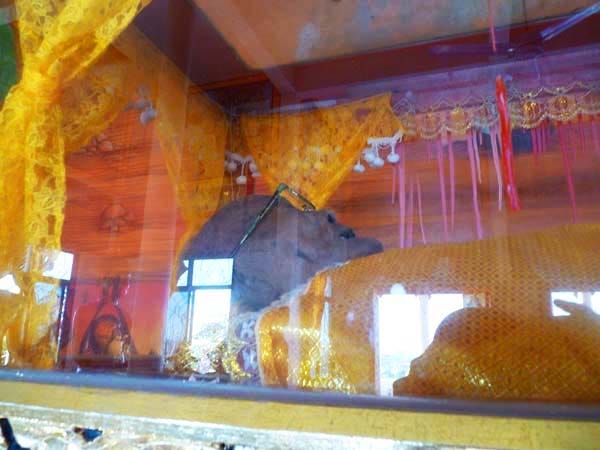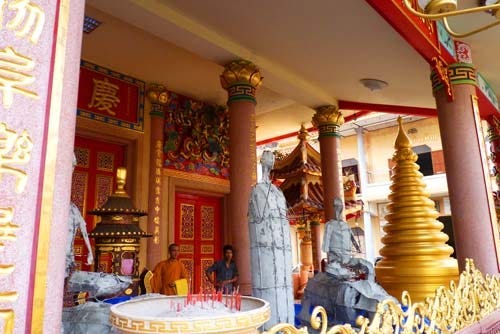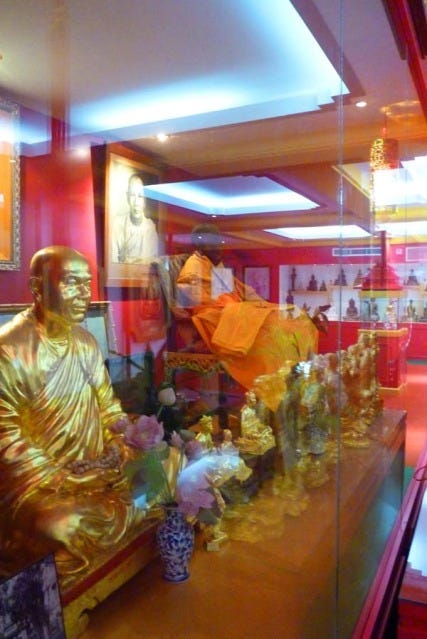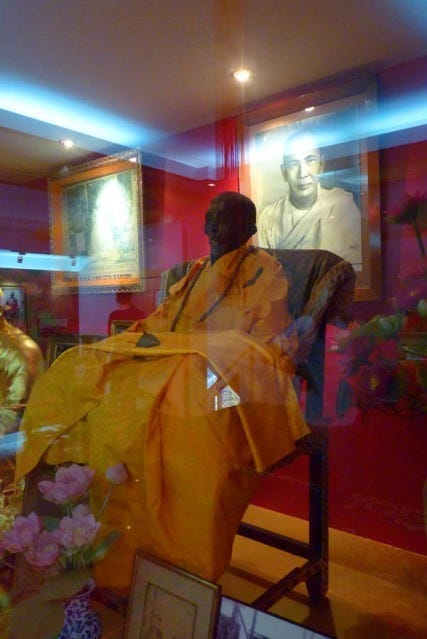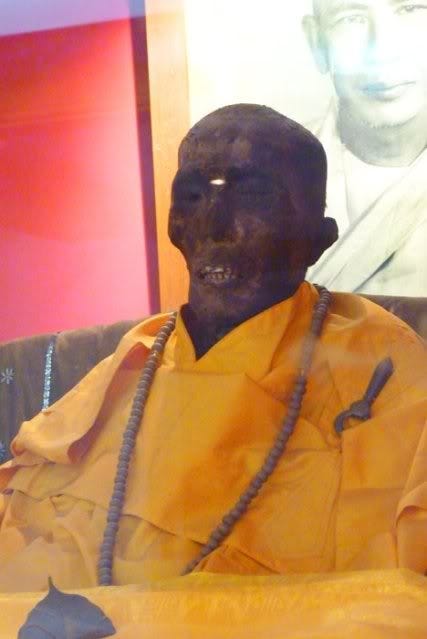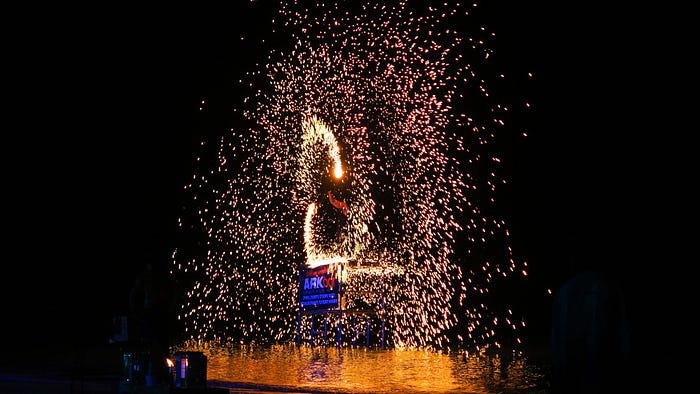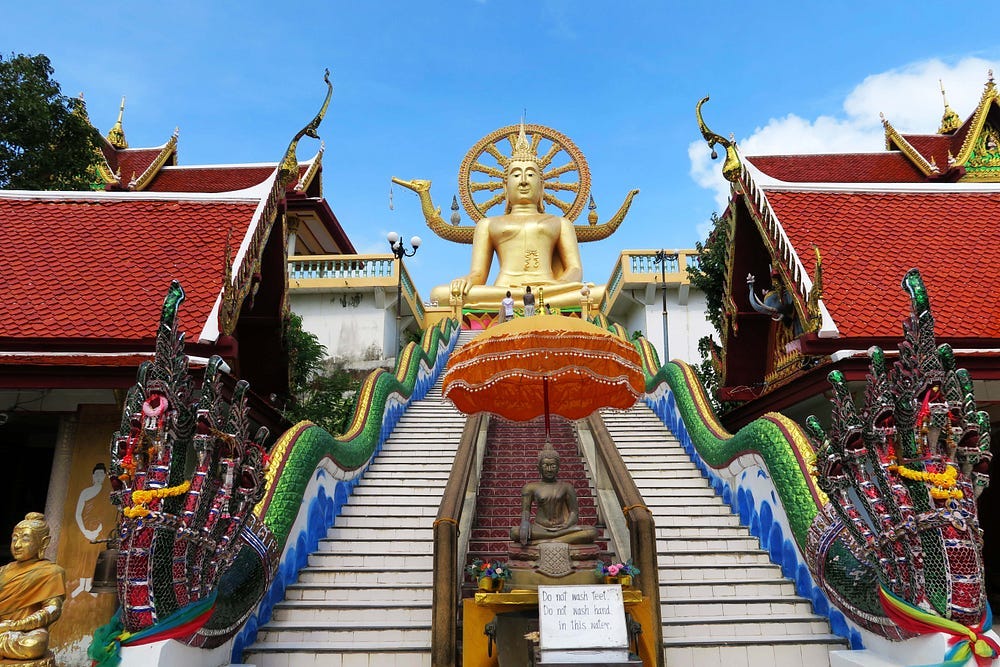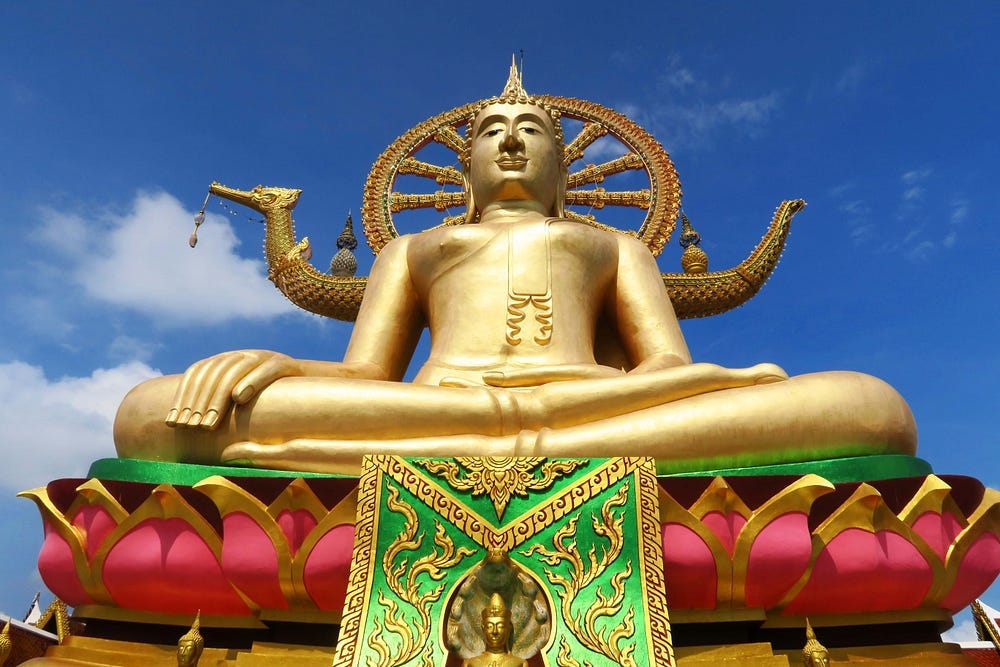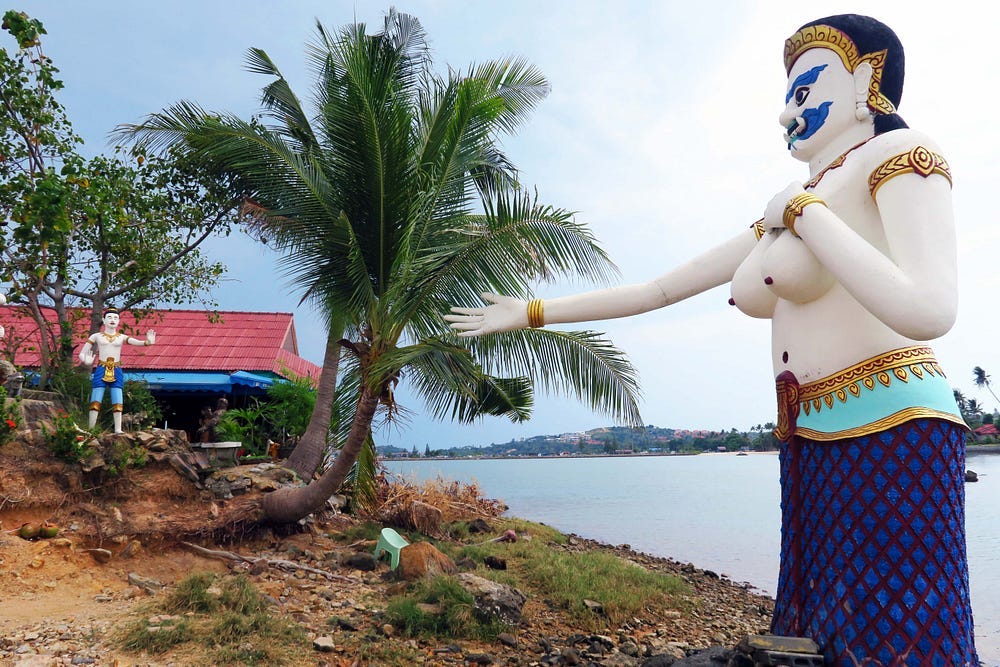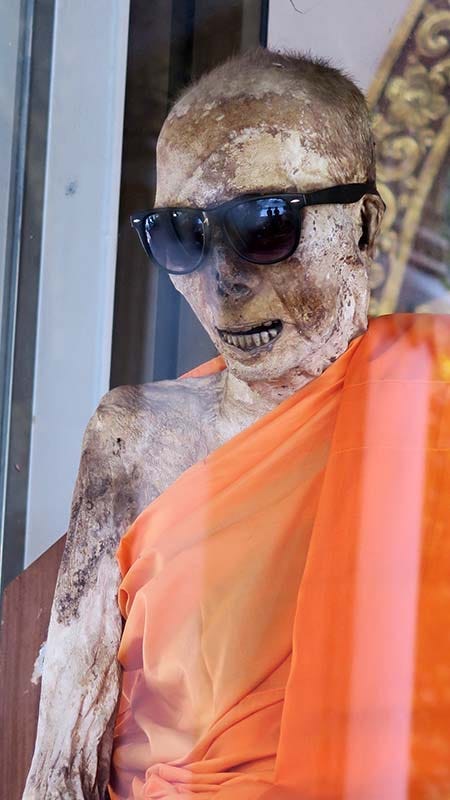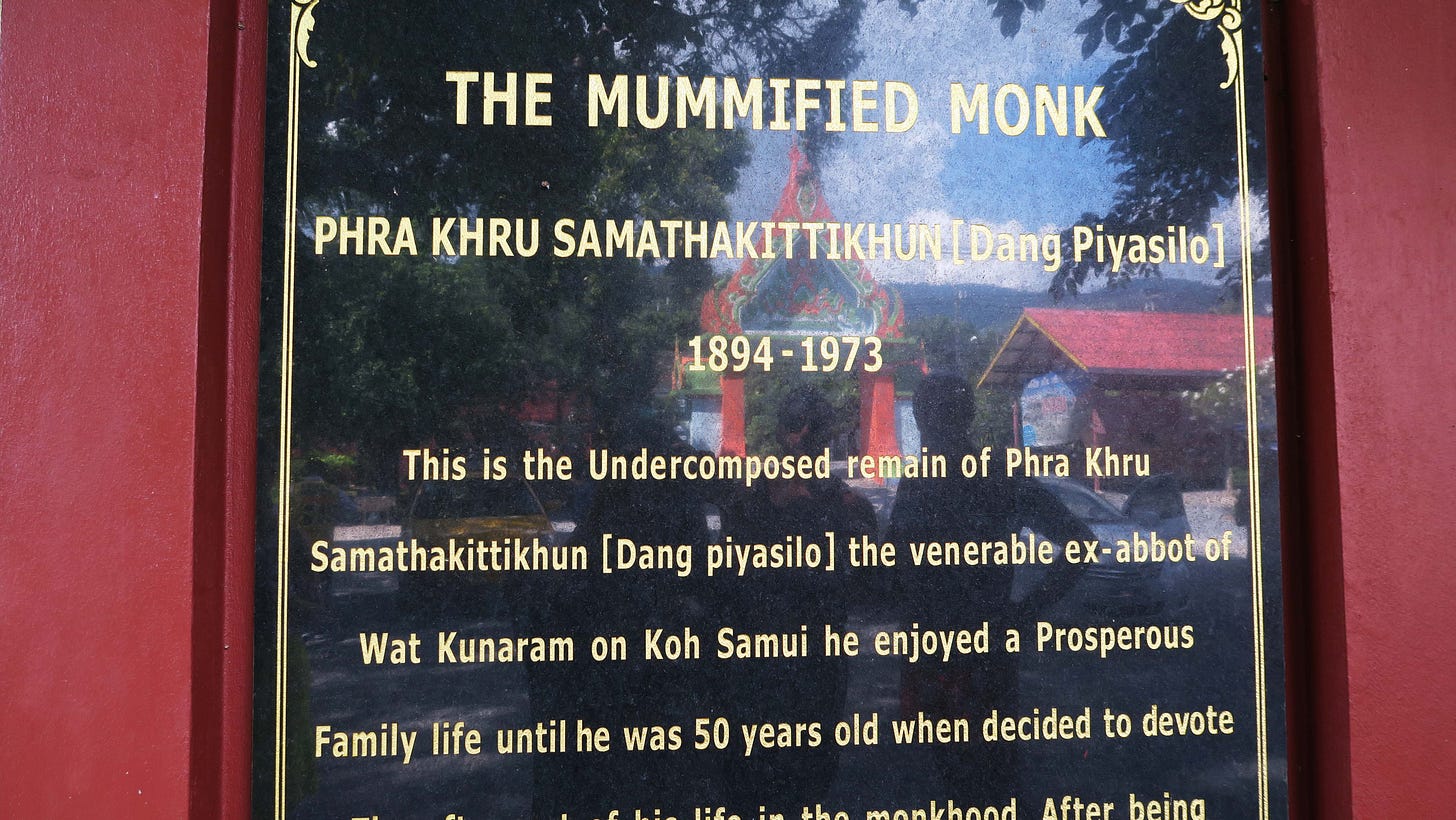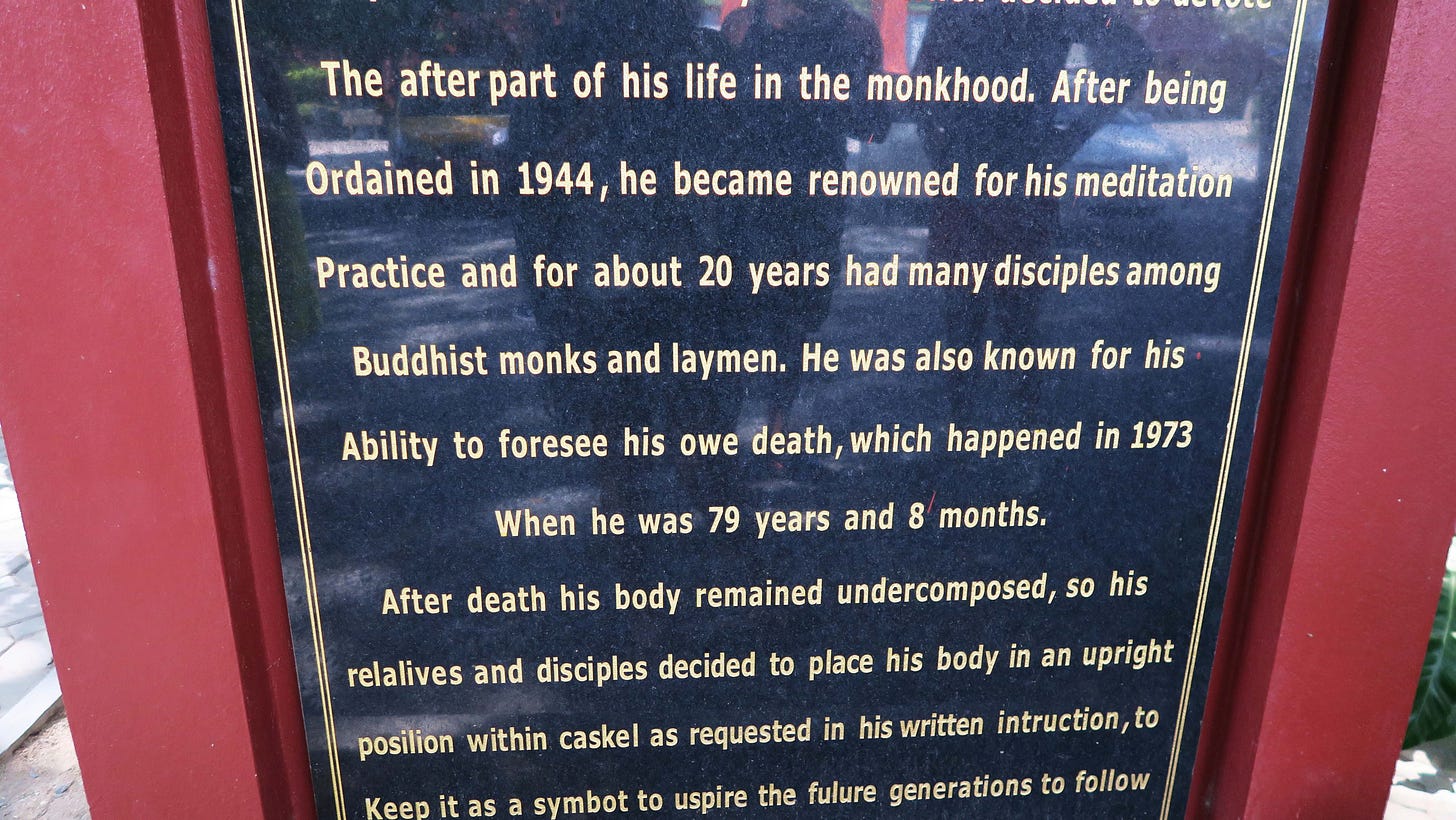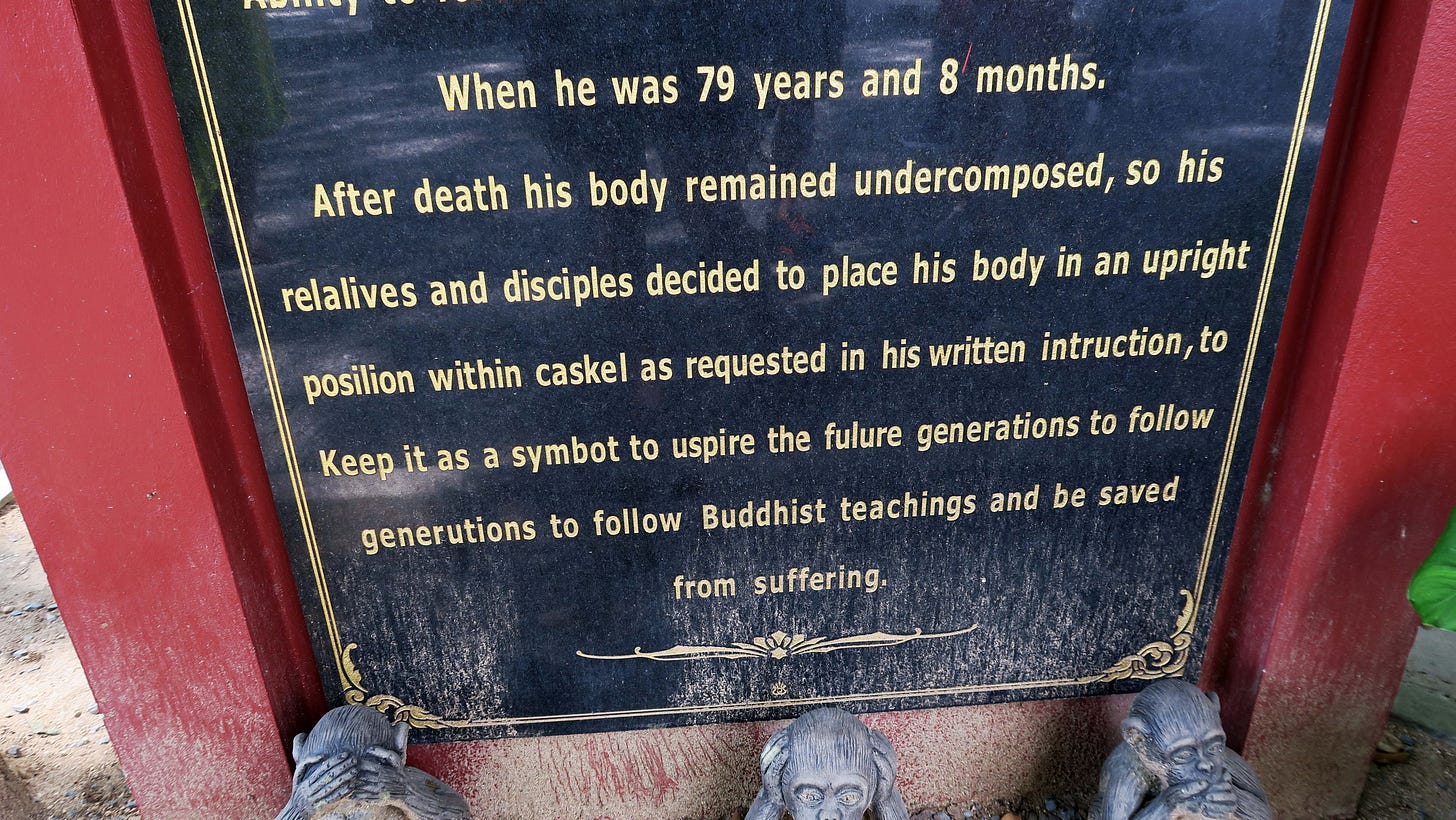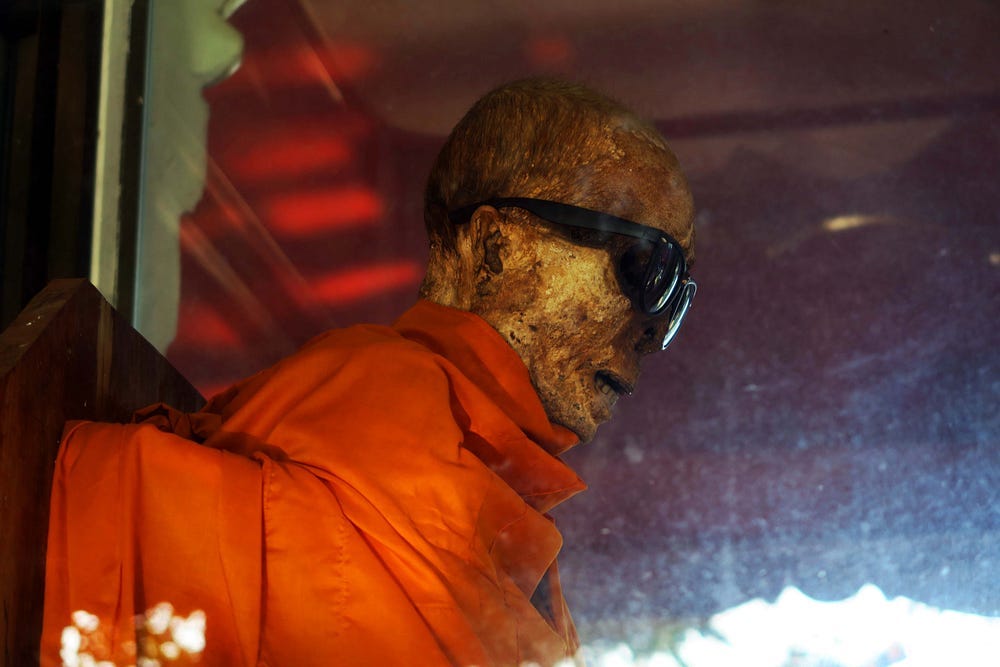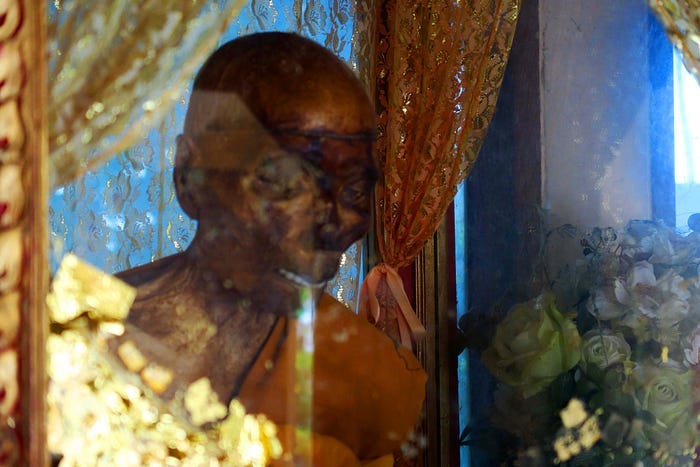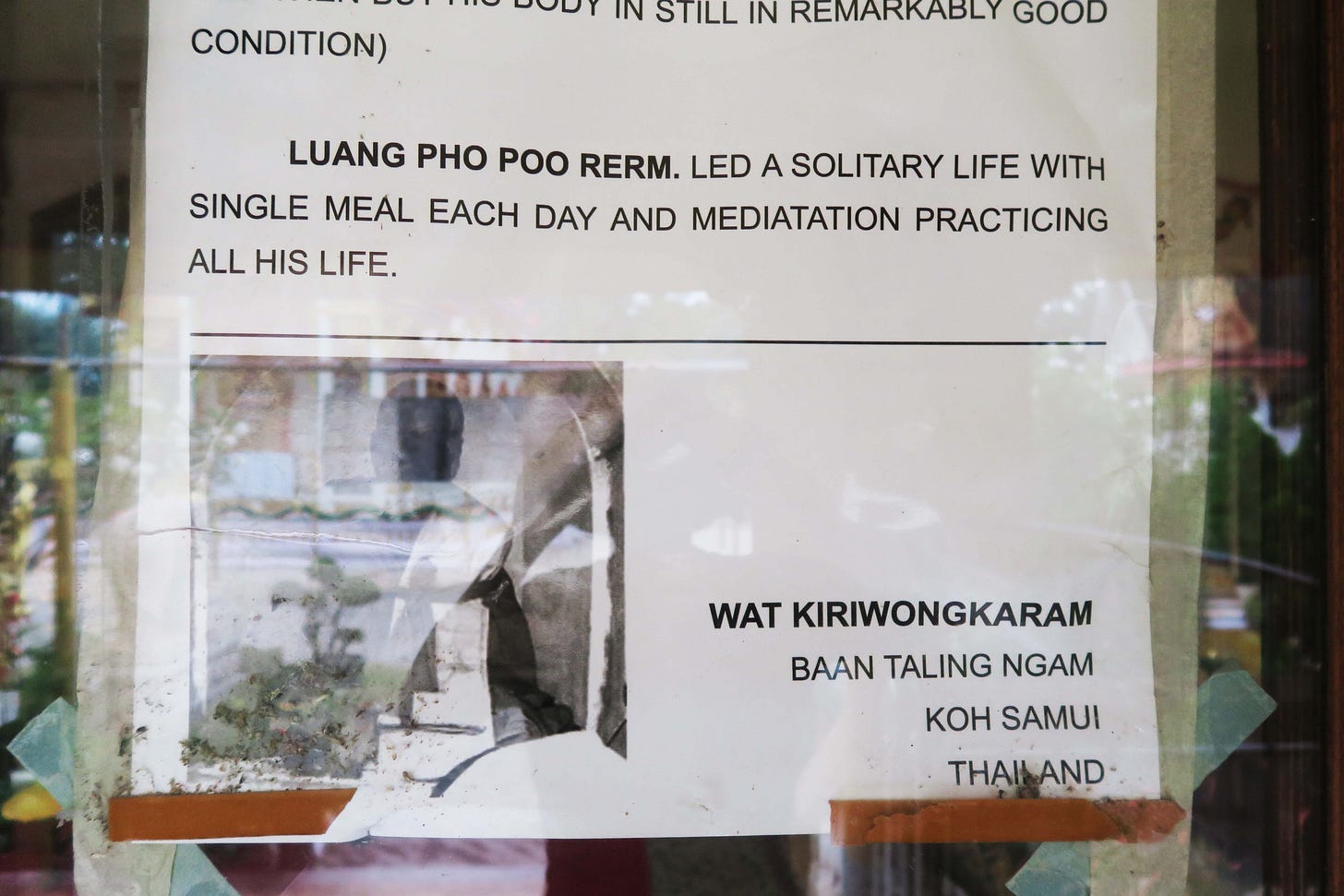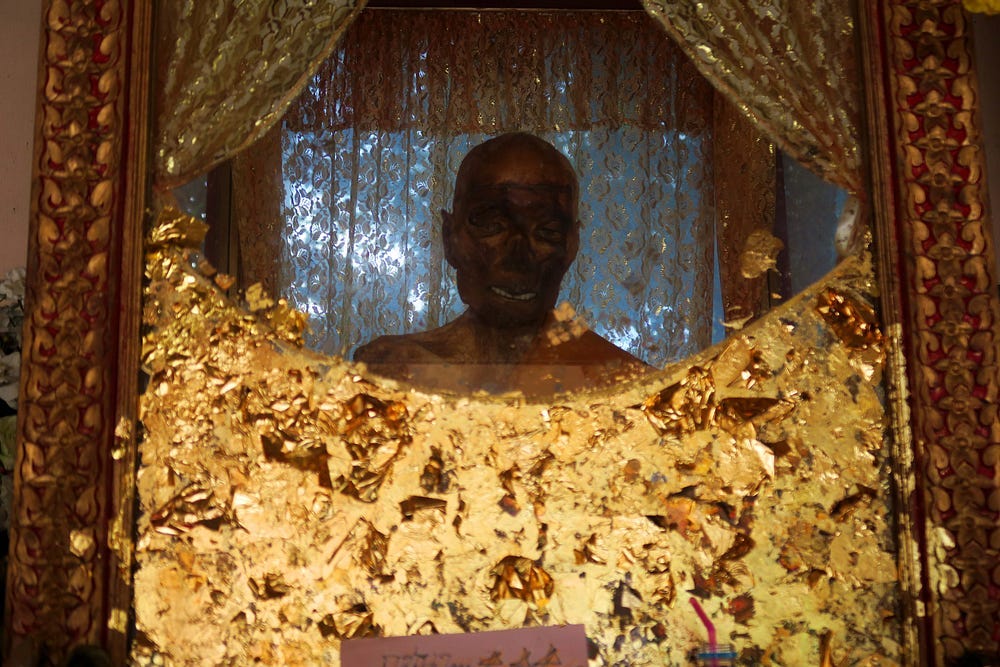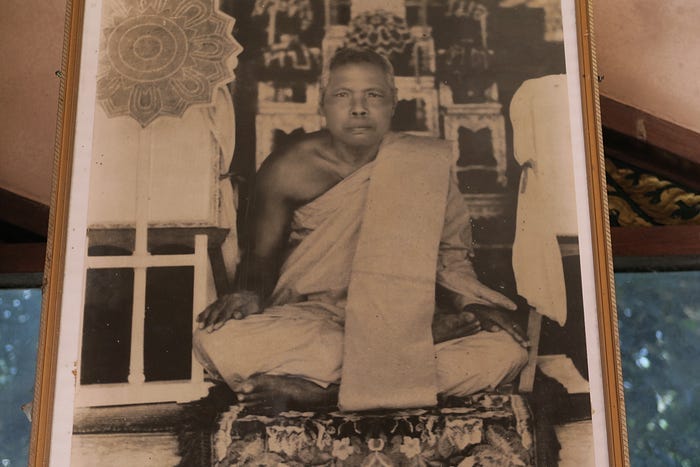The Self-Mummified Buddhist Monks of Thailand
The practice of self-mummification originated in Japan but spread throughout SE Asia.
The first mummified monk I ever saw was completely by accident. I was on a road trip with friends. We were traveling through a rural part of Thailand called Isaan.
Isaan is where most of the working-class people in Bangkok are from. The region is rich with rice fields, mountains, unique temples, and national parks. You can also find ancient Khmer ruins and real dinosaur fossils.
Because so many tourists come to Thailand, some locals can get annoyed by tourists, but people in Isaan are friendly and welcoming to visitors.
While on our way to Khon Kaen, the largest city in the province, we stopped to check out a temple that we spotted off the road.
In front of the temple entrance was a mummified monk, lying on his back, inside a glass case. He looked well-preserved, which can be challenging in such hot and humid weather.
His body was wrapped in a bright, yellow cloth, and he was wearing glasses.
I’ve always had a fascination with death, even as a kid. I’m the type of person who would rather explore an abandoned cemetery than a famous landmark crammed with tourists.
So when I saw that mummified monk for the first time, I was fascinated and wanted to learn more about this practice.
During my travels throughout Thailand, I’ve met a few mummified monks. Four to be exact.
Japanese Origins
Originating in Japan, the practice of sokushinbutsu (即身仏) is when a Buddhist monk achieves, “a state of deep meditation that places him beyond the bounds of life or death,” according to an article by Julia Shiota for National Geographic titled, “Why did these monks in Japan choose to mummify themselves?”
Monks, who wish to become sokushinbutsu, isolate themselves in the forest and eat a limited diet of tree bark, seeds, chestnuts, pine cones, and pine needles for one thousand to several thousand days.
After a period of fasting while meditating, the monk will know when it’s time for them to start the dying process. They will move their body to an underground chamber or a coffin and chant until they pass away.
If they’re successful in becoming sokushinbutsu, their body will naturally stay preserved.
This practice has spread throughout SE Asia, particularly in Vietnam, Cambodia, and Thailand.
The Mummified Monk in Chinatown
The second mummified monk I came across was also completely by accident.
I was wandering around Bangkok’s Chinatown with some friends when we came across a Vietnamese Buddhist temple called Wat Mongkol Samakom. Wat means temple in Thai.
It stood out since it looked different than a typical Thai temple. We decided to walk inside the courtyard to take a closer look. While we were exploring, a friendly, handsome monk started chatting with us and invited us inside.
Within a hall of important relics and pictures, was a mummified monk inside a large case.
The living monk explained that the mummified monk had been preserved naturally. Instead of cremating him, his body was dressed and kept in the temple as a sacred relic so people could worship him.
Behind his body is a photo of how he looked when he was still alive.
The mummified monk’s name is Chao Phra Khun. He was born Rueng Mathura Sakul on August 19th, 1900, and died on April 11th, 1958 in Chulalongkorn Hospital.
Wat Mongkol Samakom is not a touristy temple, so few people know about this monk.
The Mummified Monk With the Cool Sunglasses
It’s hard to say how many mummified monks are in Thailand. I found two by accident and am the only person, that I know of, who has written about them in English and taken pictures of them.
I know there must be more, but they’re only known to the local communities and monks of whatever temple they reside in.
There are two well-known mummified monks in Thailand, though. Both of them are on the island of Koh Samui, located in the southern part of Thailand.
I like to call Koh Samui “Bangkok on the beach” because it has everything that Bangkok has: malls, restaurants, nightlife, but on an island.
The main town of Chaweng is always busy with tourists. During high season and on weekends, you can party at a club by the beach until the sun goes up. Ark Bar is the most popular club that all the tourists go to.
Samui has a lot of cool temples. Right when you get off the ferry, you’ll see a giant Buddha statue at the aptly named Big Buddha Temple.
It’s worth visiting since the Buddha statue is amazing and there are other things to check out besides the main temple. I saw some incredible statues by the sea.
You can book a taxi tour to visit different popular sites on Koh Samui. The most famous mummified monk is located in Wat Khunaram.
The monk’s name is Phra Khru Samathakittikhun, born Dang Piyasilo in 1894. He became a monk at 50 years of age. He was a well-known monk throughout Thailand and traveled back and forth from Bangkok to Koh Samui to pray for people and offer spiritual guidance.
Phra Khru Samathakittikhun was known for his meditation practice and knew when he was going to die. He practiced sokushinbutsu so that his body would become mummified and could be put on display at Wat Khunaram. He died in 1973 at the age of 79.
When Phra Khru Samathakittikhun died, his body remained preserved. His family and disciples followed his wishes, placing him in an upright position inside a glass case.
According to the plaque placed in front of the temple, Phra Khru Samathakittikhun is on display to inspire future generations to “follow Buddhist teachings and be saved from suffering.”
You can read the full plaque here:
At some point, someone at the temple placed some cool shades on Phra Khru Samathakittikhun to cover his dried-out eyes.
He’s become a popular tourist attraction, but he’s a respected Buddhist relic. People visit him to make merit and ask for blessings.
The Mummified Monk Inside a Peaceful Courtyard
Located in a quieter part of Koh Samui, inside a temple called Wat Kiri Wongkaram, is the mummified body of Than-Ajran Phrakru Wimonteepakut (Somkaanei) Khunnathammao, born Luang Pho Perm. I’m going to use his birth name instead of his monk name since it’s shorter.
The courtyard of the temple is very peaceful. There are several, beautiful buildings guarded by fierce Nāga statues.
I could hear birds chirping and didn’t hear a single car. It was so relaxing.
The sign next to Luang Pho Perm’s body doesn’t say when his birthday was, but he was born in 1889 and became a monk at 21 years old. He died on January 9, 1976, at 87 years of age.
When he died, his body remained perfectly preserved.
The sign also states that Luang Pho Perm, “led a solitary life with [a] single meal each day and [meditation practice] all his life.”
You can read the full sign here:
Not to start any beef, but Luang Pho Perm’s body is better preserved than Phra Khru Samathakittikhun’s and is in a way better location.
The outside of his glass case is covered in shiny, gold leaves.
It’s a common practice in Thailand for Buddhists to place gold leaves on Buddha statues and other sacred relics to make merit and show respect.
Also on display, is a photo of Luang Pho Perm when he was still alive.
Out of all the self-mummified monks I’ve seen, I like visiting Luang Pho Perm the most. The temple is serene and I feel a lot of positive energy from Luang Pho Perm’s body.
Even though I only consider myself Buddhist adjacent instead of fully Buddhist, I enjoy visiting Buddhist temples and tend to feel a deeper connection to my spirituality when I’m there.
Meeting these self-mummified monks helps me reflect on my meditation practice. It also makes me think about death and what happens after you die.
I’m thankful to these monks for devoting themselves to their practice and allowing their bodies to become relics so that the living can learn from their wisdom and receive blessings, guidance, and spiritual awareness.
You can watch a video of the two mummified monks in Samui here.
(This article was originally posted on Medium.)
You can also make a one-time donation on Ko-fi or follow me on YouTube, TikTok, and Medium. Also check out my other Substacks: Full Moon Party Massacre: A Horror Novel and The Future is Vegan!
Thank you for reading!

